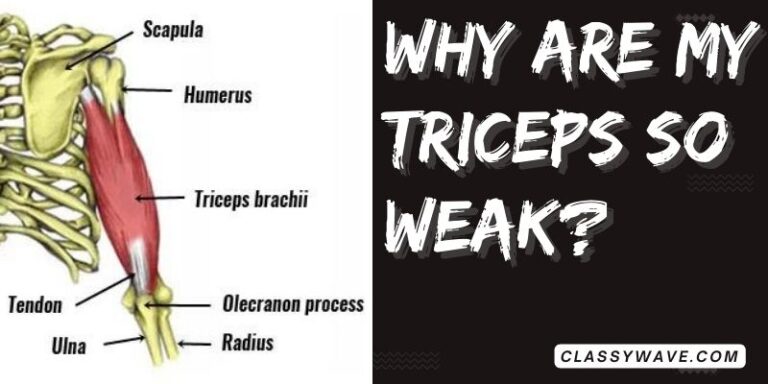Why You Need Rest Days in Your Workout Plan | Classy Wave
Ever heard the phrase, “No pain, no gain”? While it sounds motivating, constantly pushing your body without giving it time to recover can do more harm than good. Rest days are not a sign of weakness—they’re an essential part of your fitness journey. In fact, taking rest days can help you get stronger, prevent injuries, and maintain long-term consistency in your workout routine.
What Are Rest Days?
Rest days are simply the days you intentionally take off from intense physical activity. They allow your body to recover from the stress of exercise, rebuild muscle tissue, and restore energy levels. Depending on your training intensity and fitness goals, rest days can mean complete rest or light, active recovery like walking or yoga.
Why Rest Days Are Essential for Progress
1. Muscle Recovery and Growth
When you exercise, especially during strength training, your muscle fibers experience tiny tears. Rest days give your body the time it needs to repair those fibers, making them stronger and bigger. Without rest, you’re essentially breaking down muscle tissue faster than it can rebuild, leading to fatigue and slower progress.
2. Prevents Overtraining and Injuries
Working out too often without recovery can lead to overtraining syndrome—a condition that causes fatigue, decreased performance, and even depression. Your joints, tendons, and ligaments also need time to recover. Rest days reduce the risk of stress injuries like tendonitis or joint pain.
3. Replenishes Energy Stores
Your muscles use glycogen (stored carbohydrates) for energy during workouts. Rest days allow your body to replenish these glycogen stores, so you feel more energized for your next training session. Without enough recovery, you might feel constantly drained or sluggish.
4. Improves Performance and Strength
Think of your body like a battery—it can’t run at full power without being recharged. Taking rest days ensures you perform at your best every time you hit the gym. Athletes who schedule regular recovery time often see better strength, speed, and endurance gains.
5. Supports Mental Health and Motivation
Burnout isn’t just physical—it’s mental too. Exercising every day without a break can make workouts feel like a chore. Rest days help you reset mentally, reignite motivation, and maintain a positive mindset toward fitness.
Signs You Need a Rest Day
Not sure when to take a rest day? Listen to your body. Here are some signs that indicate you might need a break:
- Persistent muscle soreness
- Fatigue or lack of energy
- Trouble sleeping
- Decreased workout performance
- Feeling irritable or unmotivated
If you’re experiencing any of these symptoms, it’s a clear signal that your body is asking for rest.
How Many Rest Days Do You Need?
The number of rest days you need depends on your fitness level and workout intensity.
- Beginners: 2–3 rest days per week
- Intermediate to advanced athletes: 1–2 rest days per week
It’s also smart to alternate between muscle groups (for example, upper body one day, lower body the next) to give specific areas more time to recover.
Active Rest vs. Complete Rest
Not all rest days mean lying on the couch all day—unless your body truly needs it!
- Active Rest: Involves light movement such as yoga, stretching, walking, or swimming. This improves blood circulation and reduces muscle stiffness.
- Complete Rest: A full break from exercise, ideal after intense training sessions or when you feel exhausted.
Mixing both types of rest days throughout the week can give your body the balance it needs.
The Science Behind Recovery
When you rest, your body undergoes a process called muscle protein synthesis—this is where new muscle fibers are built. Additionally, your central nervous system (CNS) also recovers, improving coordination and strength. Hormones like growth hormone and testosterone spike during rest, aiding in muscle growth and fat burning.
Common Myths About Rest Days
Myth 1: Rest days make you lose progress.
Truth: Rest days actually enhance progress by allowing your body to repair and grow stronger.
Myth 2: You don’t need rest if you’re doing cardio.
Truth: Even cardio stresses your body and muscles, so recovery is still essential.
Myth 3: Only beginners need rest days.
Truth: Even elite athletes schedule rest and recovery as part of their training plans.
How to Make the Most of Your Rest Days
- Eat nutrient-rich foods: Focus on protein, healthy fats, and complex carbs to aid muscle repair.
- Stay hydrated: Water helps flush out toxins and supports recovery.
- Stretch or do yoga: Keeps muscles flexible and reduces stiffness.
- Get quality sleep: Aim for 7–9 hours to maximize recovery and hormone balance.
What Happens If You Skip Rest Days
Skipping rest days can lead to:
- Muscle fatigue and weakness
- Decreased performance
- Increased injury risk
- Weakened immune system
- Loss of motivation
In short, skipping recovery can sabotage all the hard work you’ve put into your training.
Conclusion
Rest days are not a setback—they’re a secret weapon for better results. By allowing your body and mind to recover, you’ll build strength, prevent injuries, and stay consistent with your fitness goals. So, the next time you feel guilty about taking a day off, remember: rest is part of the workout, not a break from it.







